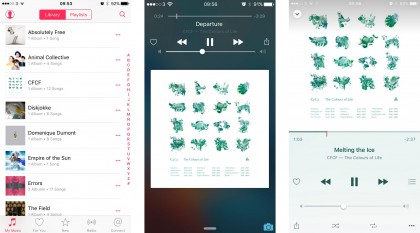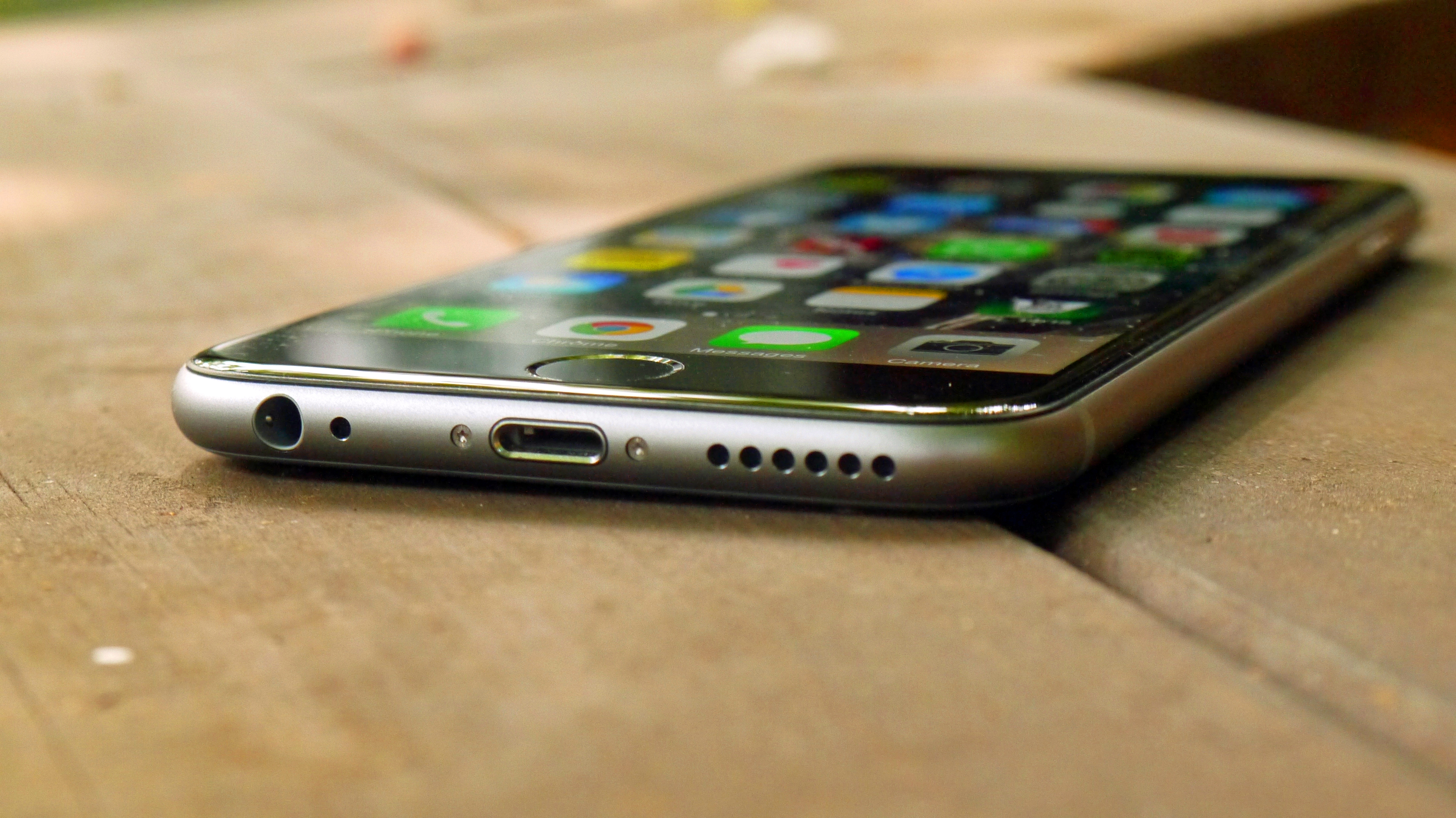Why you can trust TechRadar
Gaming on the iPhone 6 is a dream, thanks to the development of Metal. This feature was introduced in iOS 8, and it strips out some of the work needed between any game and the phone's hardware to deliver more powerful graphics while taking less power from the device.
Apple's been clever to offer its developers a stable platform to make games for, as it's resulted in some very decent titles that look beautiful and play very well.
The increase in screen size might have been a worry for some at the time of the iPhone 6's release, who feared their favourite games might not look as slick at the new, larger display sizes. But with the iPhone 6S now out and selling well, developers have long since switched to the new 4.7-inch size as the new default.
Even with those few who might not have made the switch (it's telling that I can't think of any massive examples), it's no problem thanks to the upscaling provision.
One thing's for sure: the iPhone 6's A8 chip is still more than up to the task of driving modern games, and will remain so throughout 2016 and beyond. Indeed, Apple opted to use the chip in its latest Apple TV device, which is being positioned in part as a casual games console.

It's an odd situation with gaming and power management though: Apple made a big song and dance at the time about the fact the iPhone 6's processor could manage to keep going at optimum performance, although I didn't particularly notice it was any better than the Android contingent when playing higher-power games.
What I did see was the battery performance falling away badly when gaming on the iPhone 6 – as noted above – which makes it less of a strong machine for extended sessions.
This wouldn't have been an issue a few years ago, but now the mobile phone is the primary device for casual gaming and is a billion-dollar industry – so the iPhone should be able to hold its own if you want to spend the entire commute to work destroying alien scum and then use it as an actual phone the rest of the day,
Media
The iPhone as a media device is still one of the best out there in terms of consistency for music and movies, simply because Apple's heritage from the iPod still pours through the iPhone.
There are some quibbles – the fact that most video formats are not supported will forever rankle, despite the fact that most are quickly becoming defunct – but overall it's still one of the most well-equipped phones for entertainment on the go, thanks to the great media library available through iTunes.
Sound quality
The sound quality of the iPhone – providing you pair it with a better pair of buds than those you get in the box, which I still can't even bring myself to use knowing they're going to just fall out of my oversized and useless ears – is still one of my favourite things about the phone.
It's not the best out there in terms of support – both the LG G4 and the Sony Xperia Z5 / Xperia Z5 Compact can play higher-res audio files, and the iPhone can't, despite rumours Apple was about to add in 24-bit, 192KHz support – but when it comes to playback of your standard, CD-ripped or Spotify-downloaded tracks, there's not much better to be had in terms of sound consistency.
The same can be said for video – the screen technology that debuted with the iPhone 6 and continued with the iPhone 6S is certainly an upgrade here, as the colours look richer and more vibrant than before.
Say what you want about Samsung's Super AMOLED screens on the Galaxy S6, Note 4 and Tab S, but they're very, very good at giving users the widest range of colours and deep contrasts, and Apple seems to be trying to ape that to some degree here.
The contrast ratio seems to be similar to the iPhone 5S – which was good already – which means the more atmospheric films are easy to watch in the dark scenes. The screen size is still a little on the small side, but only if you've seen or used a bigger phone regularly.
Otherwise, it's perfectly acceptable as a way of watching the football in the kitchen, with the resolution just about sharp enough to see what's going on clearly, when the other half is watching The Princess Bride in the living room despite promising she wouldn't invite anyone round when the game was on.
The lock screen is also central to the media experience on the phone, with either on-board music or that streamed from Spotify given equal billing in terms of functionality. You can slide straight through tracks with ease, and with Control Center a pervasive option throughout the phone you've always got an easy way to change songs there too.
Many have attacked Apple for not going down the widget route in the past – me included – but many Android manufacturers are coming to the realisation that beyond music and a couple of other random apps, most just want to be able to change tunes rather than have an all-singing, all-dancing way of changing settings from the home screen.

However, I would like to point out that Apple needs to improve the lock screen in some ways when it comes to music presentation, as the method of showing the album art is getting a little old now. When you look at the full-screen experience Android has baked in by default, you feel like that's more futuristic; I hope Apple can do something soon to make this look a little more amazing.
And of course, let's not forget the important point about how much stuff you can throw on there: the iPhone 6, like the 6 Plus, initially came in 16GB, 64GB and 128GB flavours, but the 128GB model has now been discontinued.
Given that nearly 4GB of storage is instantly given over to the OS (plus some loss for the GB vs Gb debate), the 16GB option isn't really going to satisfy everyone over a few years' use, especially when photos and videos start to mount up. So the 64GB, which is now the top-tier option, is really the one to go for.
I'm still slightly flabbergasted that Apple is charging so much to upgrade the memory in the devices. £80 / $100 / AU$130 for a 48GB jump? When it's only £75 / $105 / AU$135 to buy a 128GB microSD card?
While I'm obliged to point out that it's not as cut and dried as that (read our excellent feature on whether a microSD slot is really a good thing to find out more) there's no doubt that the benefits of onboard storage are not worth the extra £80 you need to pay to jump between models. So why charge so much, Apple?

Gareth has been part of the consumer technology world in a career spanning three decades. He started life as a staff writer on the fledgling TechRadar, and has grew with the site (primarily as phones, tablets and wearables editor) until becoming Global Editor in Chief in 2018. Gareth has written over 4,000 articles for TechRadar, has contributed expert insight to a number of other publications, chaired panels on zeitgeist technologies, presented at the Gadget Show Live as well as representing the brand on TV and radio for multiple channels including Sky, BBC, ITV and Al-Jazeera. Passionate about fitness, he can bore anyone rigid about stress management, sleep tracking, heart rate variance as well as bemoaning something about the latest iPhone, Galaxy or OLED TV.
